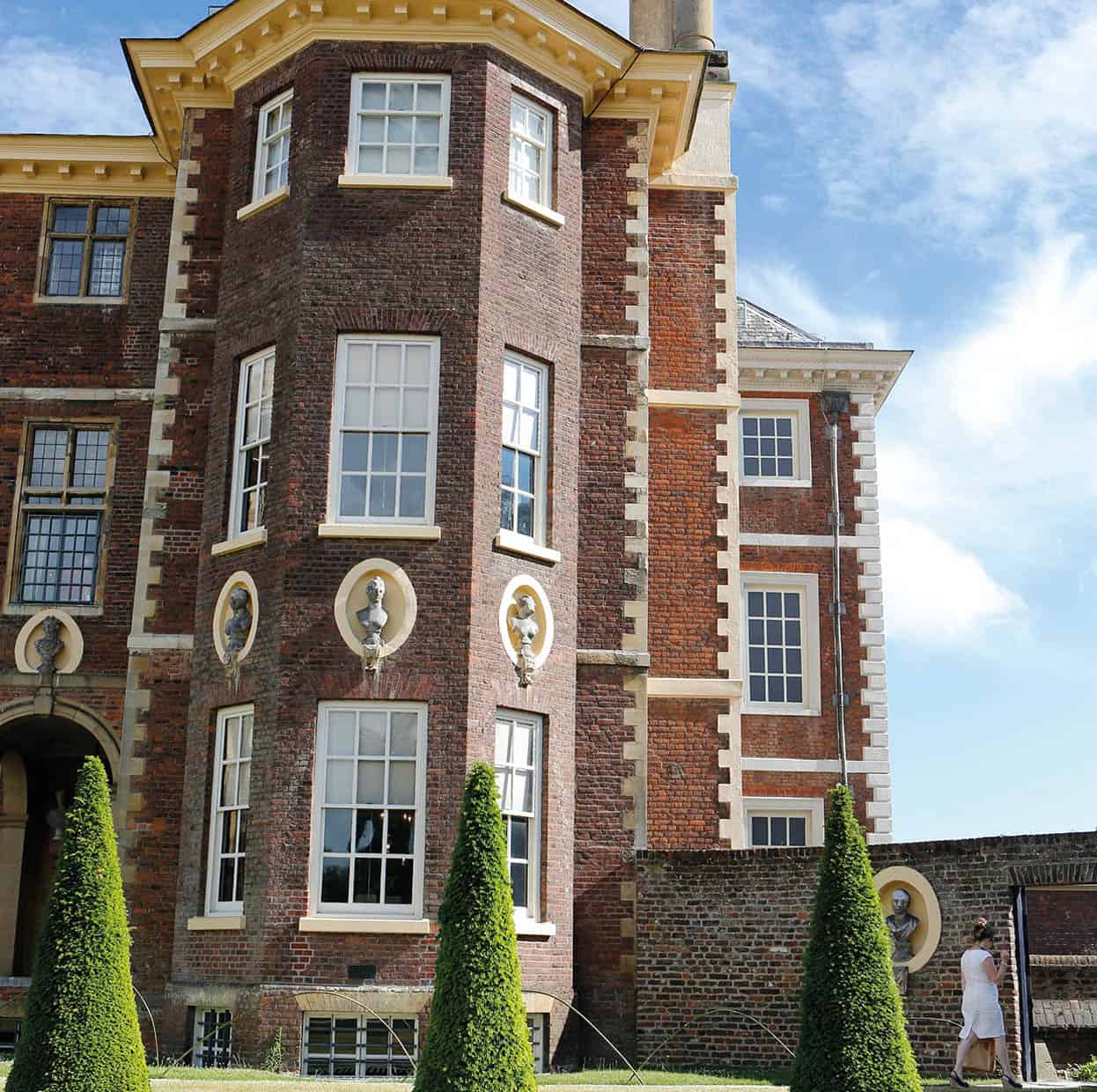
Lydia Evans/Apa Publications
Village London

Lydia Evans/Apa Publications
Ride the tube to Notting Hill for its antiques and chic boutiques, then relax in the Holland Park oasis
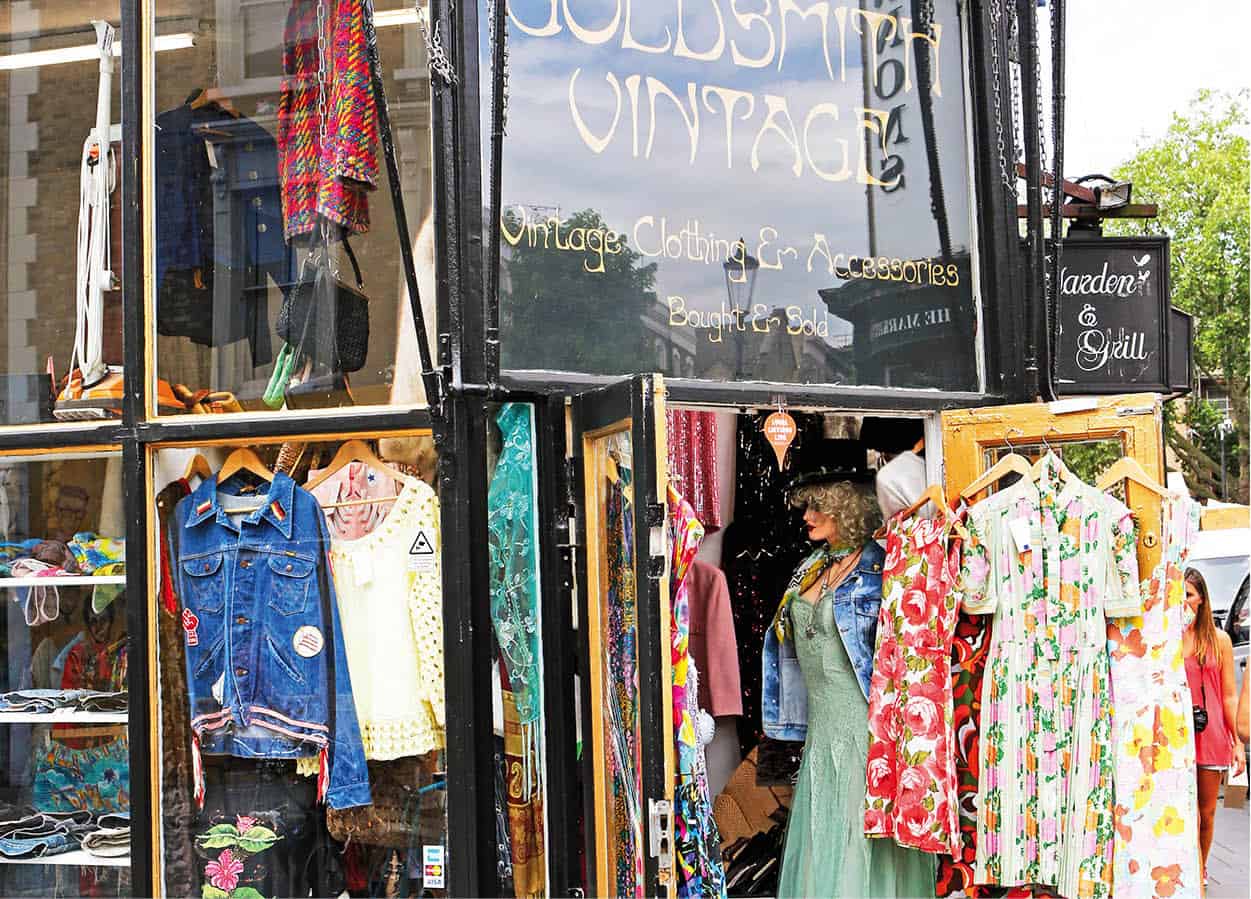
Lydia Evans/Apa Publications
Walking around Notting Hill ([map] C4; tube: Ladbroke Grove, Notting Hill Gate) with its chichi shops, cool bars and trendy, well-heeled residents, you would never guess that, as recently as the 1960s, this was one of London’s most poverty-stricken areas. Or that, in the 1950s it gave rise to Britain’s first race riots when white Teddy boys clashed with incoming Caribbean residents. That is all in the past, although the Caribbean tradition is still proudly celebrated annually with the Notting Hill Carnival (August bank holiday weekend).
The two biggest attractions are Portobello Road (www.portobelloroad.co.uk) and Holland Park. The former bursts into life as an antiques market on Saturday (8am–6pm), but week-round has many fantastic little antique shops and boutiques for vintage (and vintage-inspired) clothes. There are also some great cafés, including Café Garcia (246) – also a Spanish food store – where the gazpacho is as good as any in Spain. On Sundays there is an open-air vintage market at Portobello Green.
The Museum of Brands, Packaging and Advertising (111-117 Lancaster Rd, tel: 020 7243 9611; www.museumofbrands.com) is a museum devoted to social ephemera where you can take a trip down memory lane and reconnect with all the long-forgotten packaging of your favourite childhood treats. Since 2015, when it moved to larger premises, it has a Time Tunnel exhibition space and capsule Time Line.
Holland Park ([map] C3; tube: Holland Park) is a grand oasis of green space where you really feel you are in the countryside. At its southern end, Leighton House Museum (12 Holland Park Rd; tel: 020 7602 3316; www.rbkc.gov.uk/museums) was the home and studio of Victorian artist Frederic, Lord Leighton, with outstanding Arabic mosaics, while the landscaped Kyoto Garden has Japanese plants and water features.
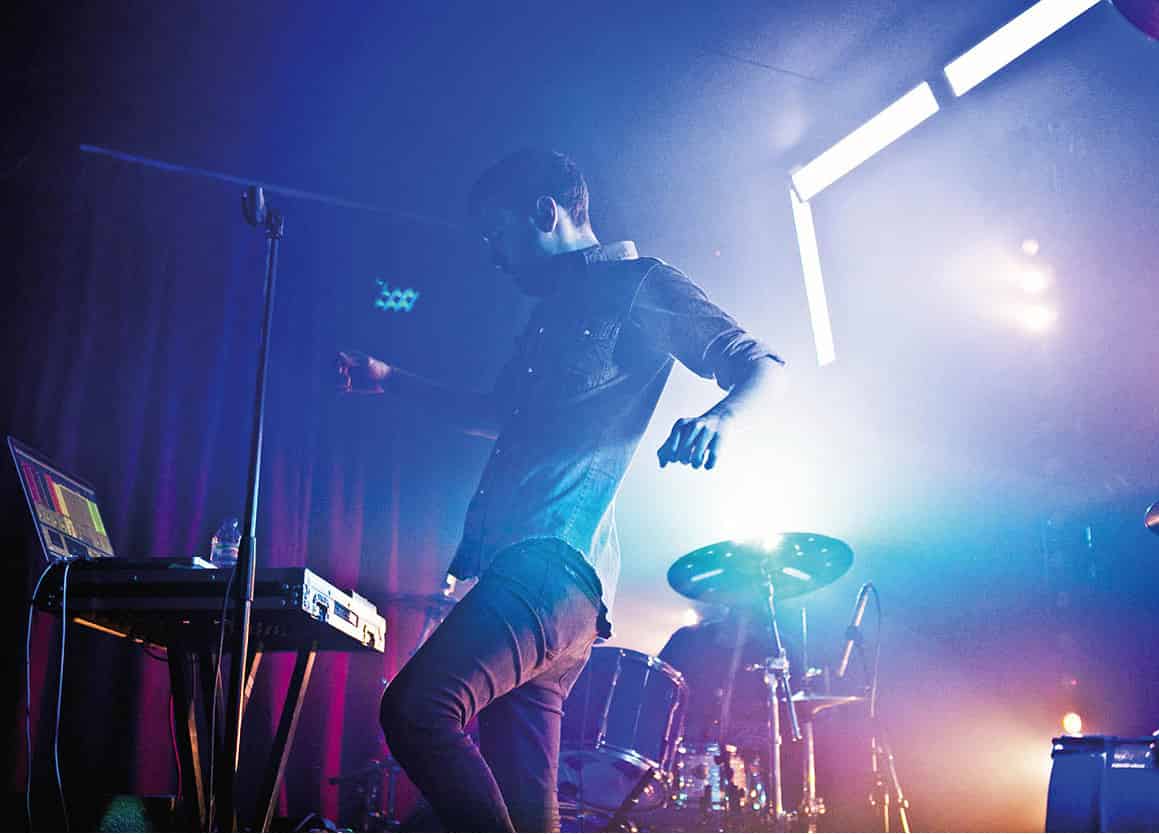
Getty Images
The postcodes E1 and E2 have the highest concentration of artists in Europe, and Shoreditch and Hoxton ([map] F4) are a thriving cultural quarter. Many people come for the galleries, but more flock here for the nightlife. Here are some of its highlights:
Galleries
Victoria Miro (16 Wharf Rd; tel: 020 7336 8109), an elegantly converted warehouse. Parasol Unit (14 Wharf Rd; tel: 020 7490 7373) is a swanky, not-for-profit space with first-rate exhibitions. Redchurch Street has many tiny art spaces that come and go. The fantastic old-style London pub The Owl & the Pussycat (34) is a more permanent fixture on this street.
Cafés, Bars, Restaurants
Kingsland Road is the way to go for fantastic cheap Vietnamese food, including Song Que (134) and Mien Tay (122). The Breakfast Club (2–4 Rufus St) is for all-day English and American breakfast. Boxpark (2−10 Bethnal Green Rd) is a pop-up but seems like a long-term fixture – a hip hangout although the range of drinks (bottled lagers) is limited.
Live Music
Rich Mix (35 Bethnal Green Rd) has live music and performance from around the world. Hoxton Square Bar & Kitchen has sourdough pizzas and cocktails, and live bands on their basement stage; Callooh Callay (65 Rivington St) is a cocktail bar and also stages gigs on its tiny stage.
A Museum and a Market
Visit The Geffrye Museum (136 Kingsland Rd; tel: 020 7739 9893; www.geffrye-museum.org.uk), a series of rooms decorated in popular styles from 1600 to the present day, set out in elegant 18th-century almshouses.
On Saturdays, try Broadway Market (London Fields) for vintage clothes and artisan food.
Shop and socialise in elegant Islington, one of the capital’s favourite drinking and dining spots
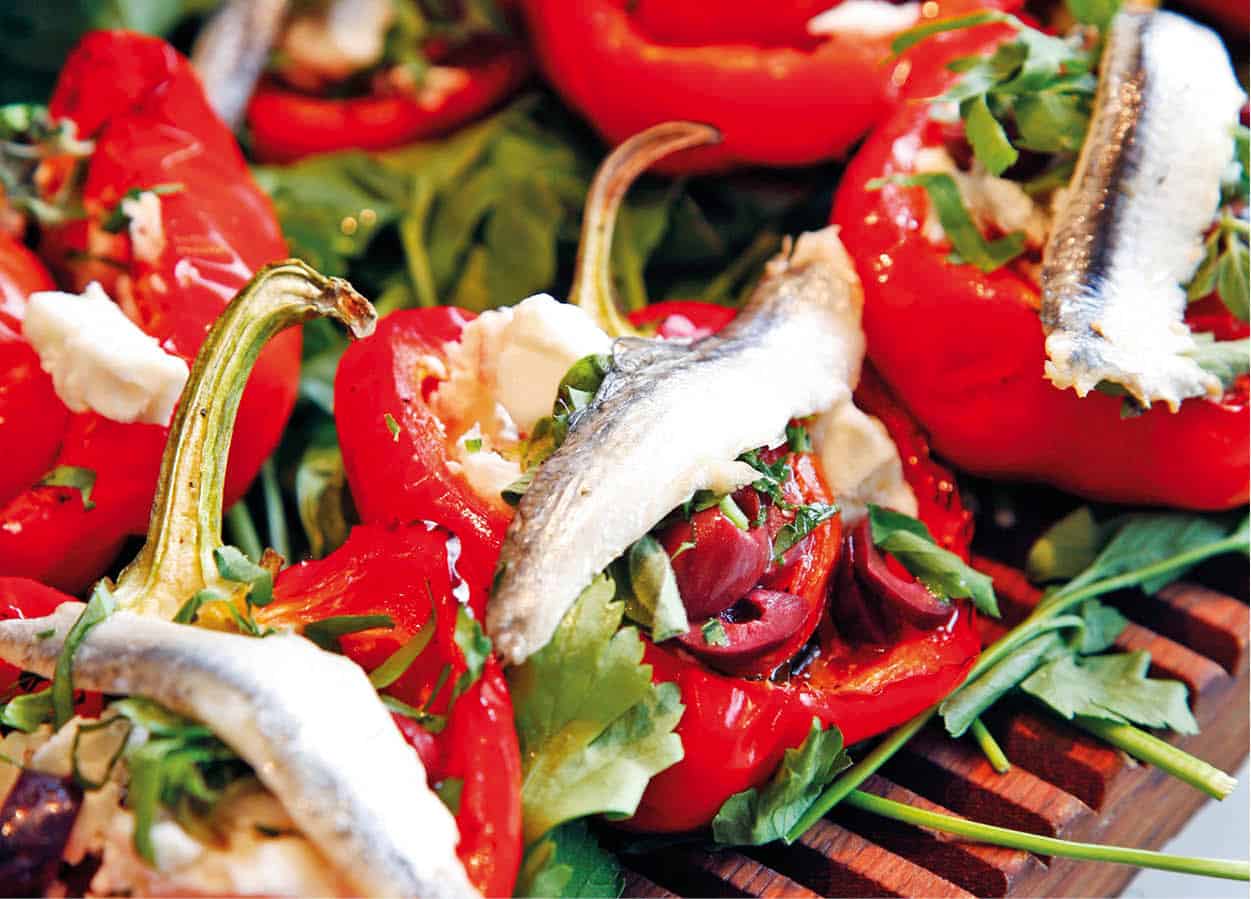
Ming Tang-Evans/Apa Publications
Now considered fairly central, Islington ([map] E4/5; tube: Angel) was built in the 19th century as one of London’s first suburbs; it has some of the city’s most elegant late Georgian and early Victorian squares, including the neo-Gothic Lonsdale Square which is worth a detour with its beautiful gardens in the centre.
Upper Street, the area’s main thoroughfare, is one of London’s better high streets, with lots of interesting independent shops among the more obvious chain names. Antique lovers throng to Camden Passage on Wednesdays and Saturdays for the market. There’s a popular independent cinema, Screen on the Green (83), and great cafés, like the Euphorium Bakery (202) with an onsite café, Ottolenghi (287) for delicious Middle Eastern-influenced Mediterranean dishes (pictured), or Gallipolli Café Bistro (102) for eating Turkish meze in a party atmosphere.
Islington is also the capital’s alternative theatre land, with more stage space per capita than any other part of London. Sadler’s Wells (Rosebery Ave; tel: 020 7863 8000; www.sadlerswells.com) is London’s ‘dance house’. The King’s Head (115 Upper St; 020 7226 8561; www.kingsheadtheatre.com) was the first pub theatre opened since Shakespeare’s day and launched the careers of Hugh Grant and Alan Rickman. There is also the Almeida (Almeida St; tel: 020 7359 4404; www.almeida.co.uk), one of London’s most innovative small theatres, which has a great French restaurant and bar attached, and the Little Angel Theatre (14 Dagmar Passage; tel: 020 7226 1787; www.littleangeltheatre.com), where children are mesmerised by amazing puppet shows.
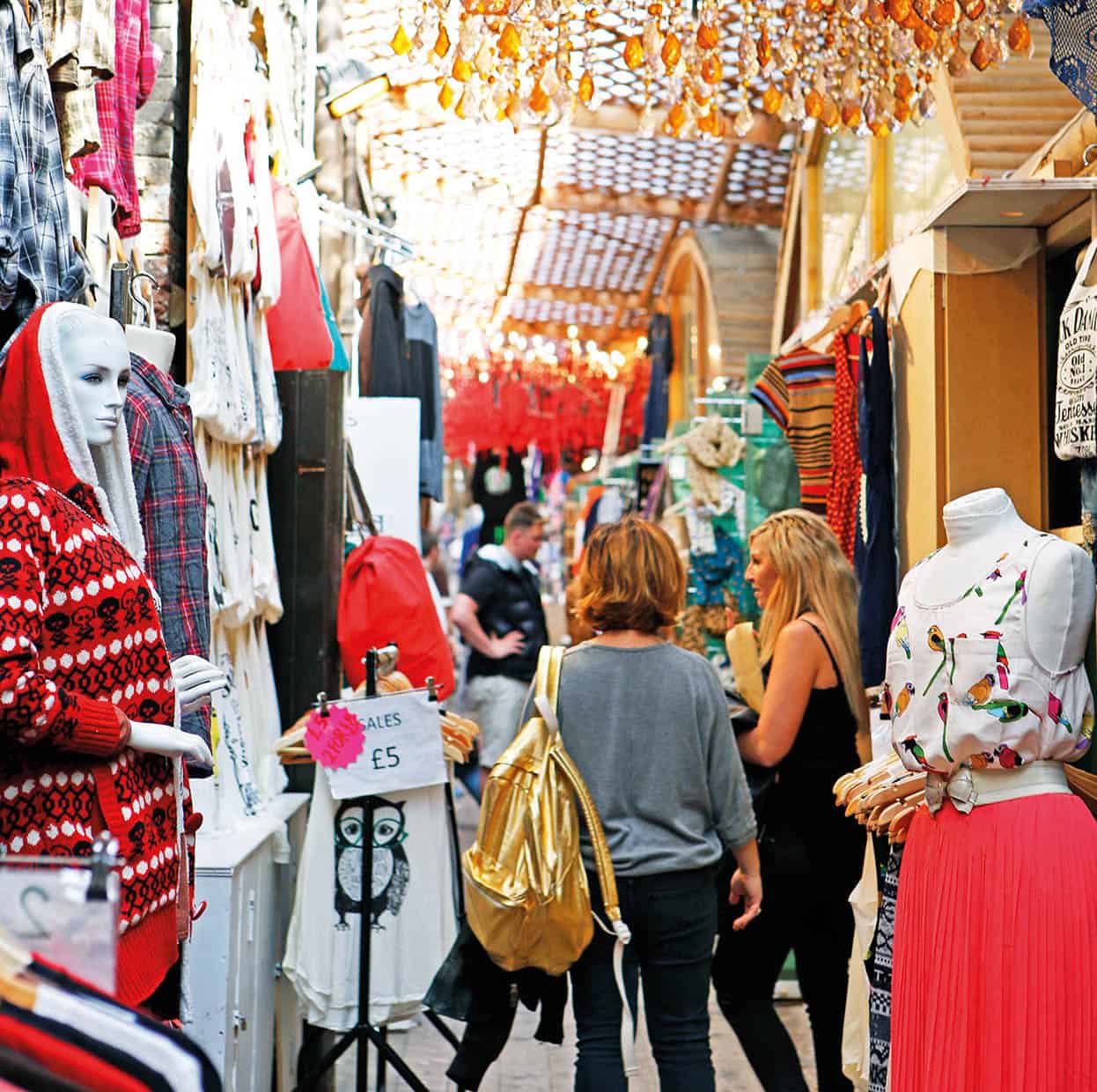
Lydia Evans/Apa Publications
With a whopping 10 million visitors a year, Camden Market ([map] D5; tube: Camden Town, Chalk Farm) is one of London’s biggest attractions, a huge sprawl of six markets from Camden to Chalk Farm. Quantity has perhaps brought with it a dilution of quality, and it has become increasingly gentrified over the years, but there are still some great finds, especially around Stables Market (towards the direction of Chalk Farm). Many of the shops and stalls are open daily, although it is busiest on Sundays.
But there’s a lot more to the neighbourhood than its market. Camden has long been the spiritual home of London’s music scene. Among the best venues are: The Roundhouse (Chalk Farm Rd) with its eclectic mix of concerts and performance, indie bar The Barfly (49 Chalk Farm Rd), which is credited with having launched loads of successful bands, including The Strokes and Coldplay, the Jazz Café (5 Parkway), a top venue for soul and R&B, and Dublin Castle (94 Parkway), where Madness started out, has several live unsigned bands each night.
Some of London’s most valuable property is in backstreet Camden, and a stroll down the Regent’s Canal allows you to peek into some very grand gardens. Following the canal heading west from the market takes you to Regent’s Park ([map] D4) within about 15 minutes. The park is another huge draw with its gently sloping lawns, rose gardens and football pitches, and the ZSL London Zoo (tel: 020 7722 3333; www.zsl.org) – its latest attraction is the lion enclosure.
Cross Prince Albert Road, and you are in genteel Primrose Hill park ([map] D4). Climb the hill for its beautiful views back down over the whole city, and explore Regent’s Park Road, which is lined with chic shops and great cafés.
Discover the revamped East End with the Olympic Park
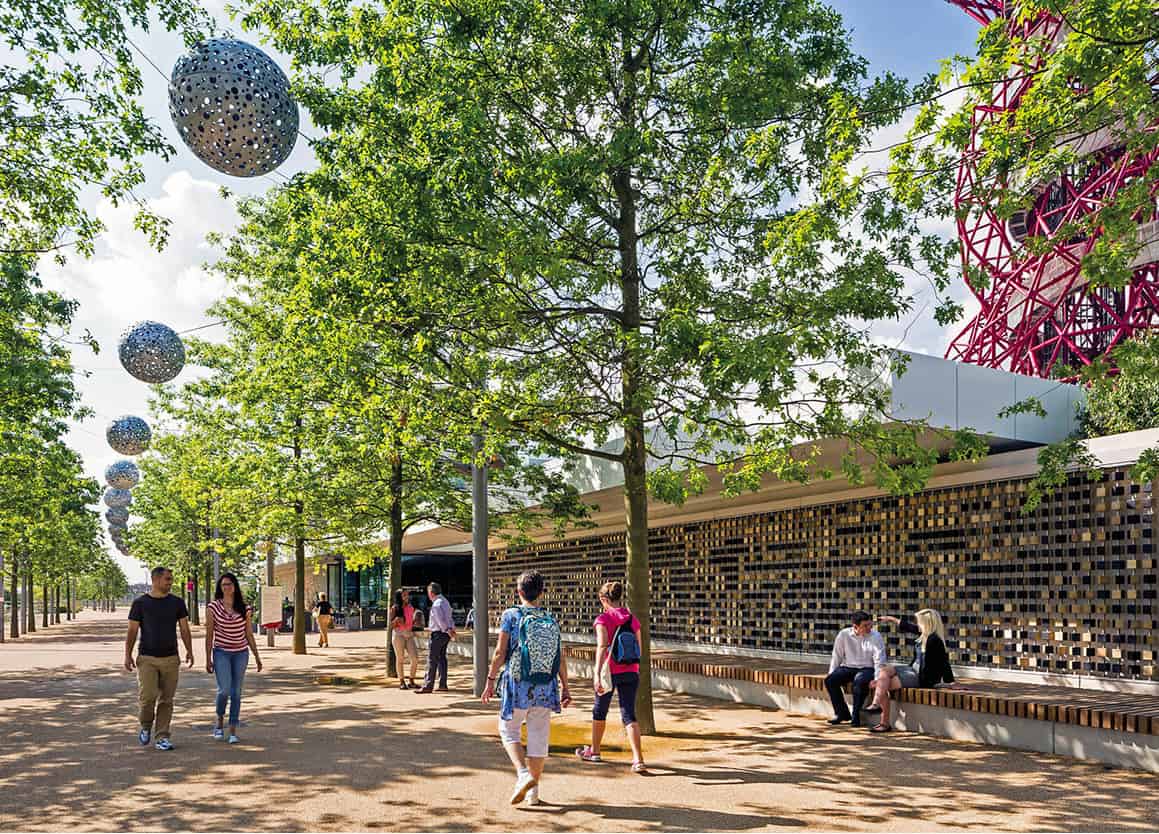
MIles Willis
The term ‘East End’ refers to the area extending out north and east from the old walled City of London. To Londoners, ‘East End’ used to conjure up images of chirpy cockneys, gritty dockland locations and associations with poverty and immigration. But that is now far from the whole story, and the entire area has benefitted from regeneration and hipness radiating outwards from Hoxton and Shoreditch (for more information, click here). The biggest news by far in the East End – in fact for the whole of the city in recent decades – was the London 2012 Olympic and Paralympic Games. The Queen Elizabeth Olympic Park in Stratford was the focal point of the sporting events, and it altered the face of this traditionally deprived part of town, by building and completely landscaping derelict wasteland.
One of the key points of winning the Olympic bid was the concept of Legacy – a promise that the benefits of making the city more sporting did not start and finish with the games in the summer of 2012. Whether it has turned London into a city of sporting talent is arguable, but what is certain is that many of the venues specially built are now open to the public. These include Zaha Hadid’s splendid Aquatic Centre, which is now run as a public swimming pool – including the diving training pool used now by Olympic champion Tom Daley. You can try your hand at track cycling at the Lee Valley VeloPark in the iconic velodrome where Sir Chris Hoy and the rest of Team GB won their gold medals, or cheer on the London Lions basketball team at the Copper Box Arena. From 2016 the main Olympic Stadium has been leased by West Ham United, the English premier league football club, where they play all their home games. In addition to the sporting venues, you can also ascend the ArcelorMittal Orbit (http://arcelormittalorbit.com) – the red twisting viewing tower created by Anish Kapoor. Choose your descent – by life, stairs, abseil or even a huge slide, circling the outside.
The Olympic Park is also much loved as a beautiful green space, with wild flowers, gentle hills, walkways and open spaces for public events. There are regular free tours of the site.
Queen Elizabeth Olympic Park, Stratford; tel: 0800 0722 110; http://queenelizabetholympicpark.co.uk; [map] G5
East End museums
Two East End museums worth an excursion are the V&A Museum of Childhood (Cambridge Heath Rd; tel: 020 8983 5200; www.vam.ac.uk/moc; tube: Bethnal Green; [map] F4), a family favourite with toys from the near and distant past. A quirky venue is the Viktor Wynd Museum of Curiosities (11 Mare St; tel: 020 7998 3617; www.thelasttuesdaysociety.org; rail: Cambridge Heath; [map] F4) is part cocktail bar and part private collection of oddities.
Retreat to the royal gardens of Kew and Richmond where the banks of the Thames turn rural
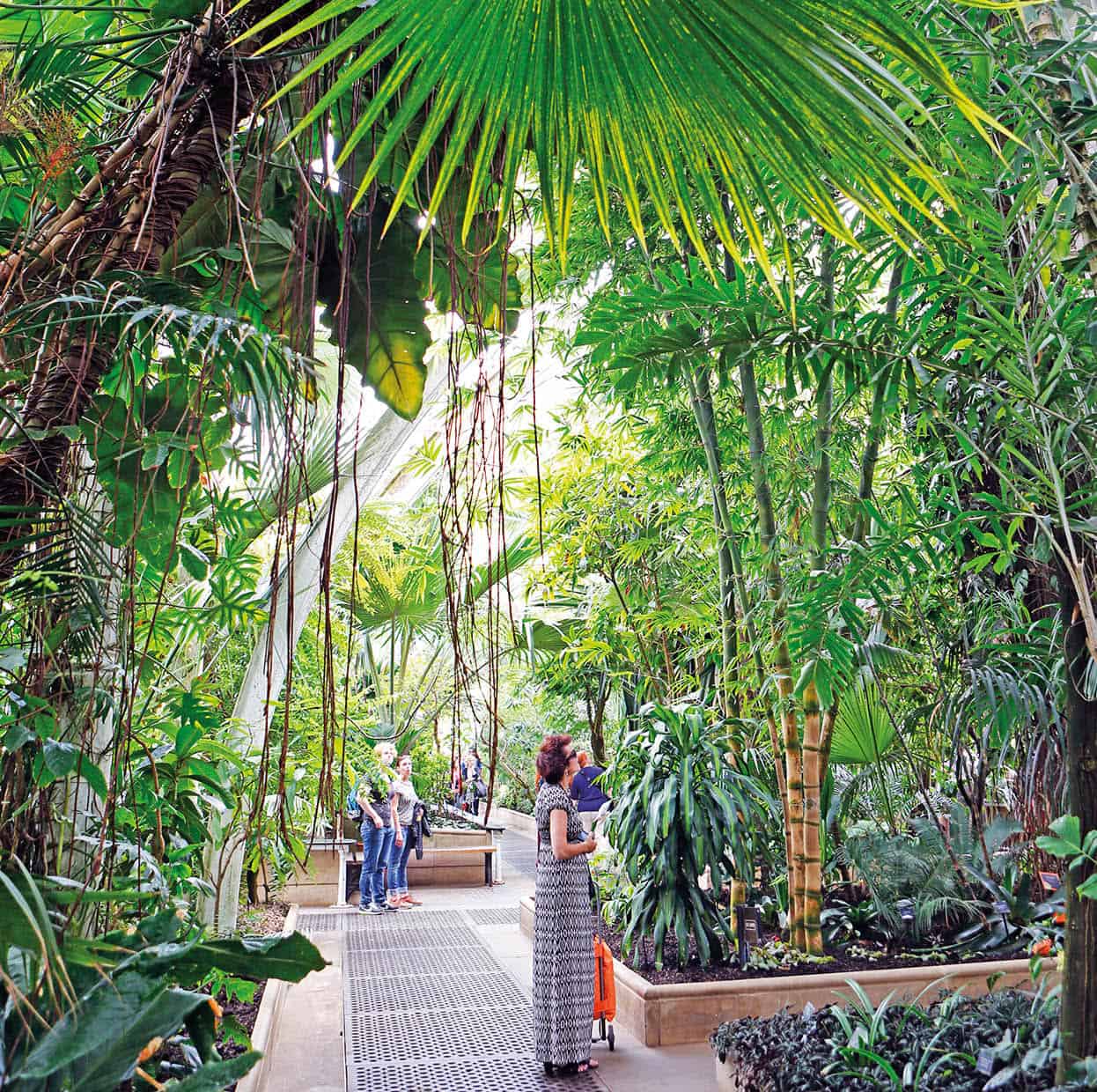
Lydia Evans/Apa Publications
Ever wondered what else the architects of the London Eye have done for London? Well hop on board the first boat, bus or train to Kew and see the stairway to heaven they’ve built at Kew Gardens ([map] A3; tube/train: Kew Gardens). The Rhizotron and Xstrata Treetop Walkway takes you 18 metres (60ft) up in the air to stroll among tree tops. It’s breathtaking, as is the rest of the Royal Botanic Gardens; the largest living plant collection in the world where you can delight at the towering tropical plants of the Palm House (pictured) and ascend the Chinese pagoda.
Kew is approximately 10 km (6 miles) from central London, and here the Thames is a tamer, prettier, almost bucolic thing, making this one of the best places for a river walk. The 5-km (3-mile) stretch between Kew Bridge and Richmond Bridge allows you to look in the gardens, and the Old Deer Park and gives beautiful views across the river.
Richmond-upon-Thames ([map] A2; tube/train: Richmond) is a lovely old town within greater London, with royal connections going back centuries, and is still a wealthy district with some handsome palaces and parks to explore. On the top of Richmond Hill is the largest city park in Europe, Richmond Park – 12 square miles of undulating meadows, and coppiced woodland full of deer which roam freely and are remarkably friendly, much to the delight of visiting children.
Back down the hill, if you continue along the towpath beyond Richmond Bridge for a mile you reach Ham House (tel: 020 8940 1950), a remarkably well-preserved 17th-century house with spectacular gardens and statuary.
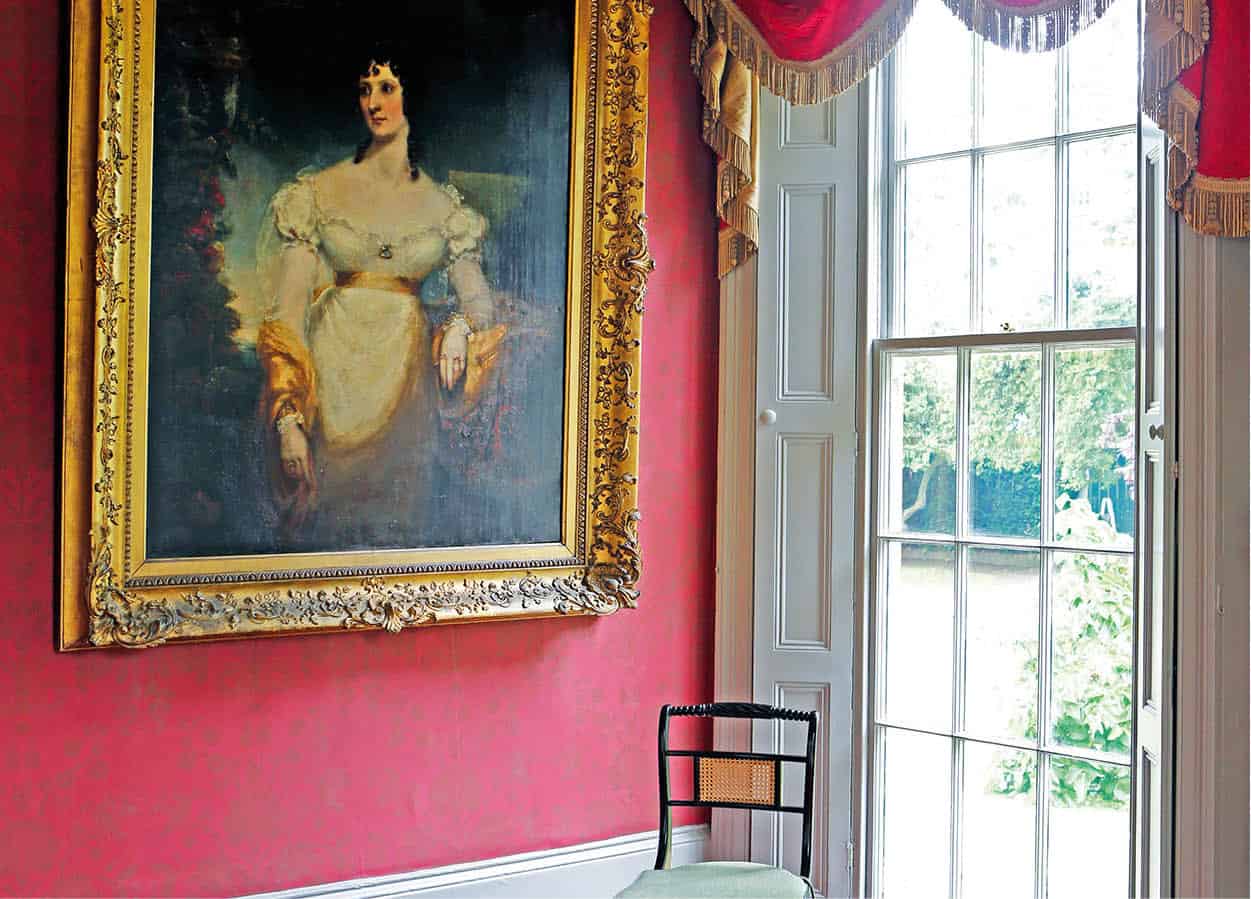
Lydia Evans/Apa Publications
Between the exclusive villages of Hampstead and Highgate is the marvellous verdant sprawl of Hampstead Heath ([map] D5; tube: Hampstead) – 320 hectares of woodlands, hills and ponds. The top of Parliament Hill has benches conveniently placed to sit and gaze out over the panorama of London or the kite flyers and dog walkers all around. Sporty types should head for one of the three bathing ponds – men’s, women’s or mixed – for a dip. And arty types should go to Kenwood House (tel: 0370 333 1181; www.english-heritage.org.uk; tube Archway/Golder’s Green, then 210 bus), a neoclassical mansion that has Henry Moore and Barbara Hepworth statues in its grounds.
Over the years, Hampstead was known as an area for intellectuals, and there are house museums to pay tribute to its most illustrious former residents. At the Freud Museum (20 Maresfield Gardens; tel: 020 7435 2002; www.freud.org.uk; tube: Finchley Road) you can see the great analyst’s preserved study including his couch – though not lie on it. Keat’s House (Keats Grove; tel: 020 7332 3868; www.cityoflondon.gov.uk; tube: Hampstead Heath) is the elegant Regency villa where Keats wrote odes and fell in love with his neighbour, Fanny Brawne. And Karl Marx is laid to rest in Highgate Cemetery (http://highgatecemetery.org; tube: Highgate) – 20 wild and atmospheric hectares full of dramatic and ornate Victorian graves and sombre tombs.
Both Highgate and Hampstead villages are dotted with lovely old pubs, including the allegedly haunted Spaniards Inn (Spaniards Road), and The Flask (Highgate West Hill), which has a big front garden and good Sunday lunches.
Be seduced by two handsome south London suburbs – historic Greenwich and leafy Dulwich
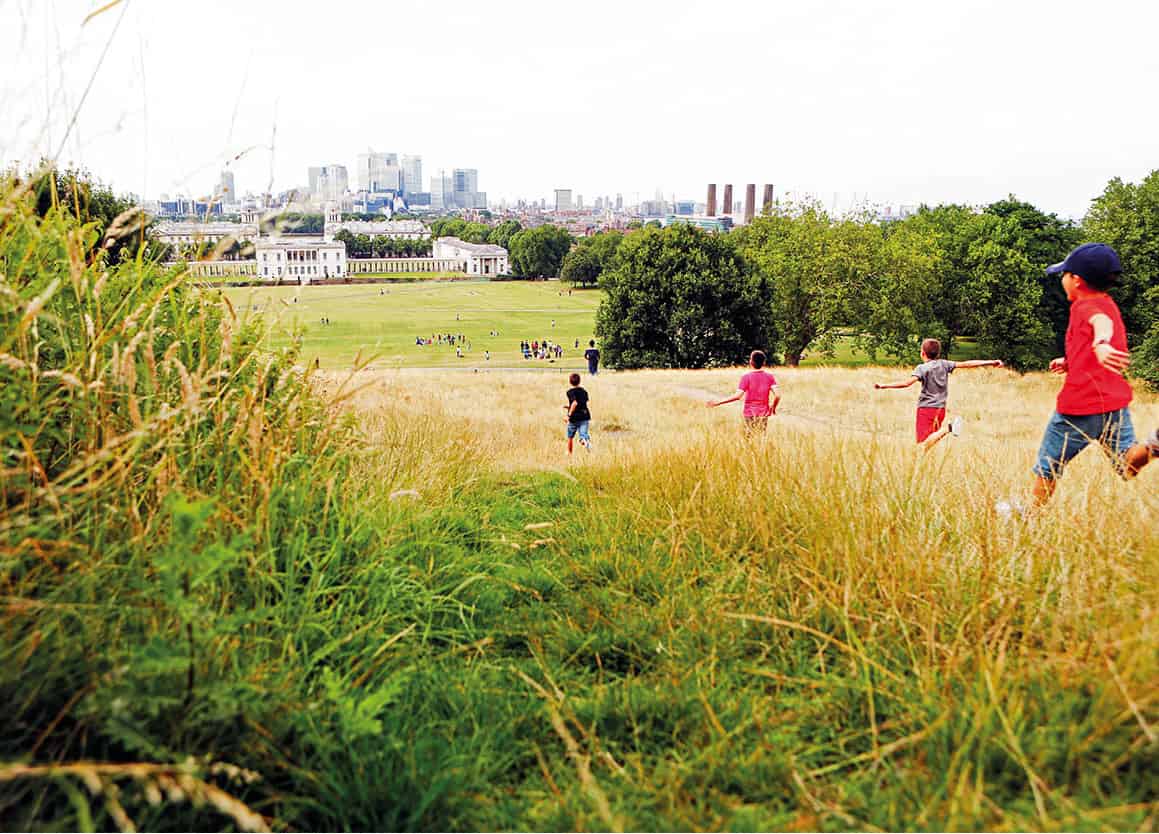
Lydia Evans/Apa Publications
The importance of Greenwich (DLR/train: Greenwich; [map] G3) stretches further back in time than the Middle Ages. On the south bank of the Thames, the ancient village was the gateway between London and the Channel ports. By the 18th century the combination of Britain’s wealth, maritime power and scientific learning had blessed Greenwich with the most beautiful ensemble of buildings in the British Isles.
The most spectacular way to visit Greenwich is by boat (www.dlrlondon.co.uk or www.thamesriverservices.co.uk). This way you can begin your Greenwich trip at the riverfront, gazing at the Baroque splendour of the raised colonnades and twin domes of Sir Christopher Wren’s Royal Naval College framing the elegant simplicity of the Queen’s House, designed by Inigo Jones in 1616. Next door, the National Maritime Museum (www.rmg.co.uk; tel: 020 8858 4422) displays an unrivalled collection of maritime art and artefacts. Its 16 galleries are set around Neptune Courtyard, a spectacular space, spanned by a glass roof. The oldest of England’s royal parks, the vast and glorious Greenwich Park dates from 1433, when the Duke of Gloucester, King Henry V’s brother, created it.
Walk up the hill from the museum and you reach its most famous building, the Royal Observatory (www.rmg.co.uk; tel: 020 8858 4422) Here you can stand astride the Prime Meridian line, a brass rail set in concrete that allows you to have one foot in the western hemisphere and the other in the eastern.
The heart of Greenwich lies just west of the park. Here you’ll find the clipper ship the Cutty Sark, beautifully restored after a fire in 2007, Hawksmoor’s St Alfege’s Church, and Greenwich Market (Thur–Sun), full of little arts and crafts and food stalls.
Royal Hill is a lovely Georgian street with a gorgeous old pub, Richard 1st (52 Royal Hill), at one end and a good Mediterranean restaurant, The Hill, at the other (89).
Another historic south London suburb, often overlooked, Dulwich (the ‘w’ is silent) is also packed with interesting historic places. Dulwich Park (College Rd) has magnificent old oak trees and a large lake. The Dulwich Picture Gallery (7 Gallery Rd; www.dulwichpicturegallery.org.uk; tel: 020 8693 5254; train: West Dulwich) has a superb collection of Baroque paintings. The Horniman Museum (100 London Rd; www.horniman.ac.uk; tel: 020 8699 1872; train: Forest Hill) is a truly eccentric museum with an aquarium and a small children’s zoo, all of which is set in a hilly park.